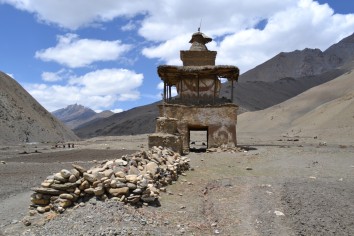Nepal is a hilly country offers remote and wilderness experience during trekking. Wilderness trekking in Nepal offers unique experience of nature and culture.
The border regions of western and eastern Nepal are remote and were only opened to trekking from 1991. In the west the regions lie in the rain shadow behind the Himalayan chain and are high, dry extensions of the Tibetan Plains. The people are poor and live in small scattered communities, migrating with their herds to high summer pastures. The scenery is vast and in thrilling earthy colours of all shades. Flowers abound in autumn.
In contrast, the eastern trails pass through verdant farmland and magnificent forests rich in floral and faunal species. Rain can fall at any time of the year and the N-S facing Kangchenjunga massif receives the brunt of the monsoon. The scale of the mountains above the upper valleys is humbling.
To help protect the fragile environments and rich cultural heritage of the diverse Tibetan communities living in these areas, costly Restricted Area permits are required while trekkers have to be accompanied by a registered guide, in parties with a minimum of two persons. Mustang can be walked as a teahouse trek; Kangchenjunga is a teahouse trek, with the possibility of a couple of nights in tents at and near the N or S base camps. Dolpo requires a full camping trek; with several nights spent on glorious remote kharkas (grazing fields).
Each of these treks is demanding; requiring pre-fitness and stamina for success; but the rewards and rich memories far outweigh the work.
.png)










